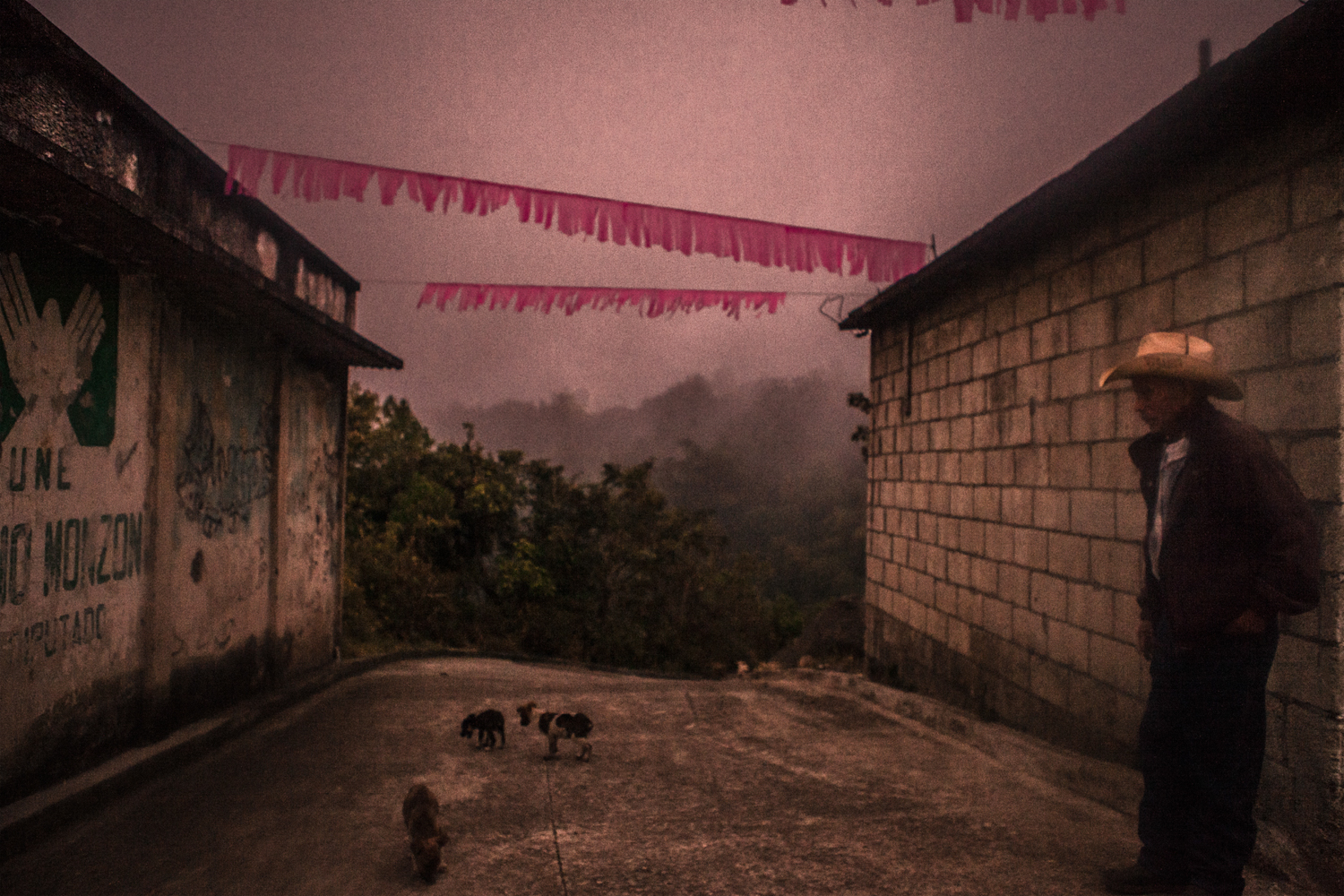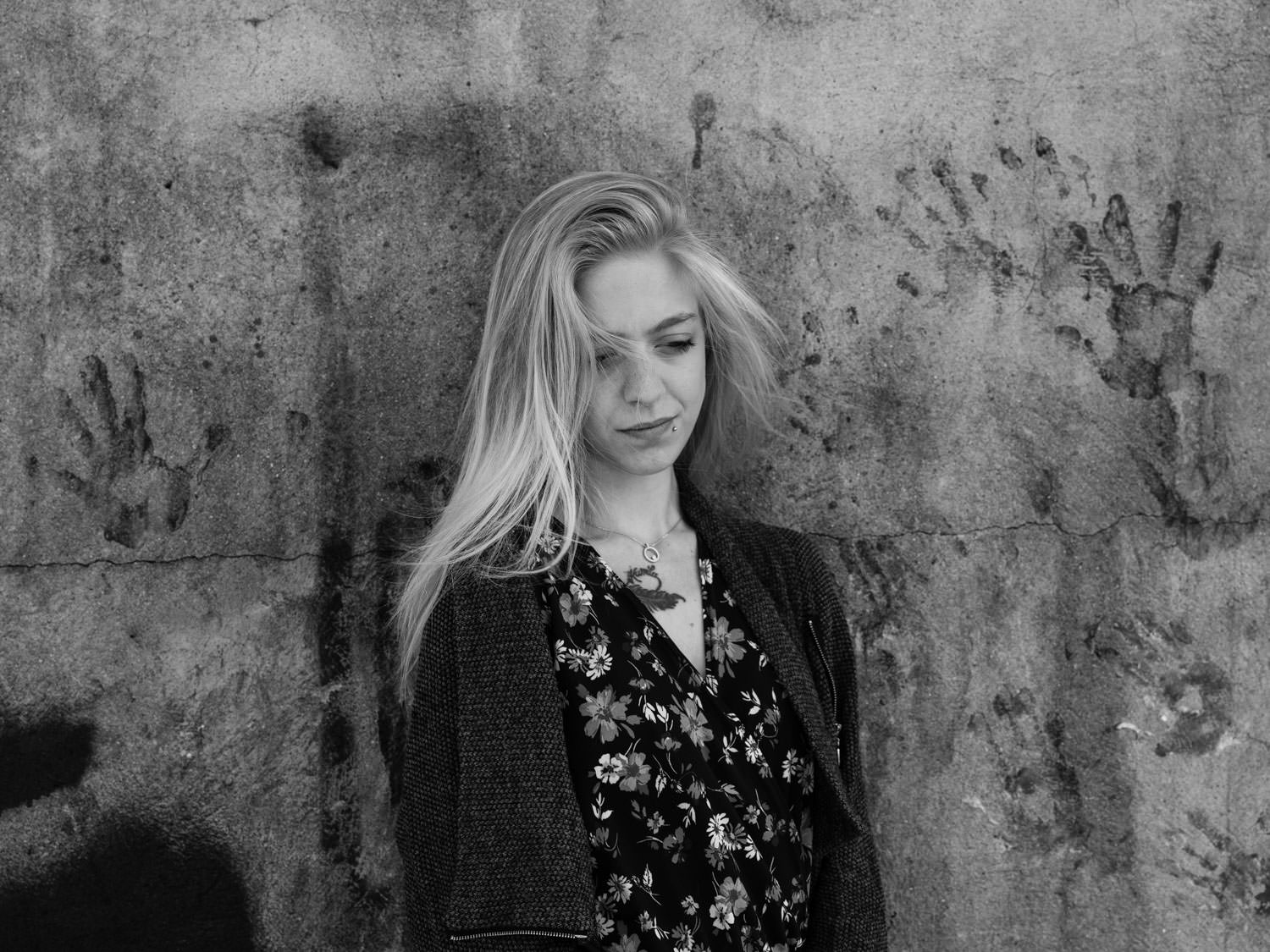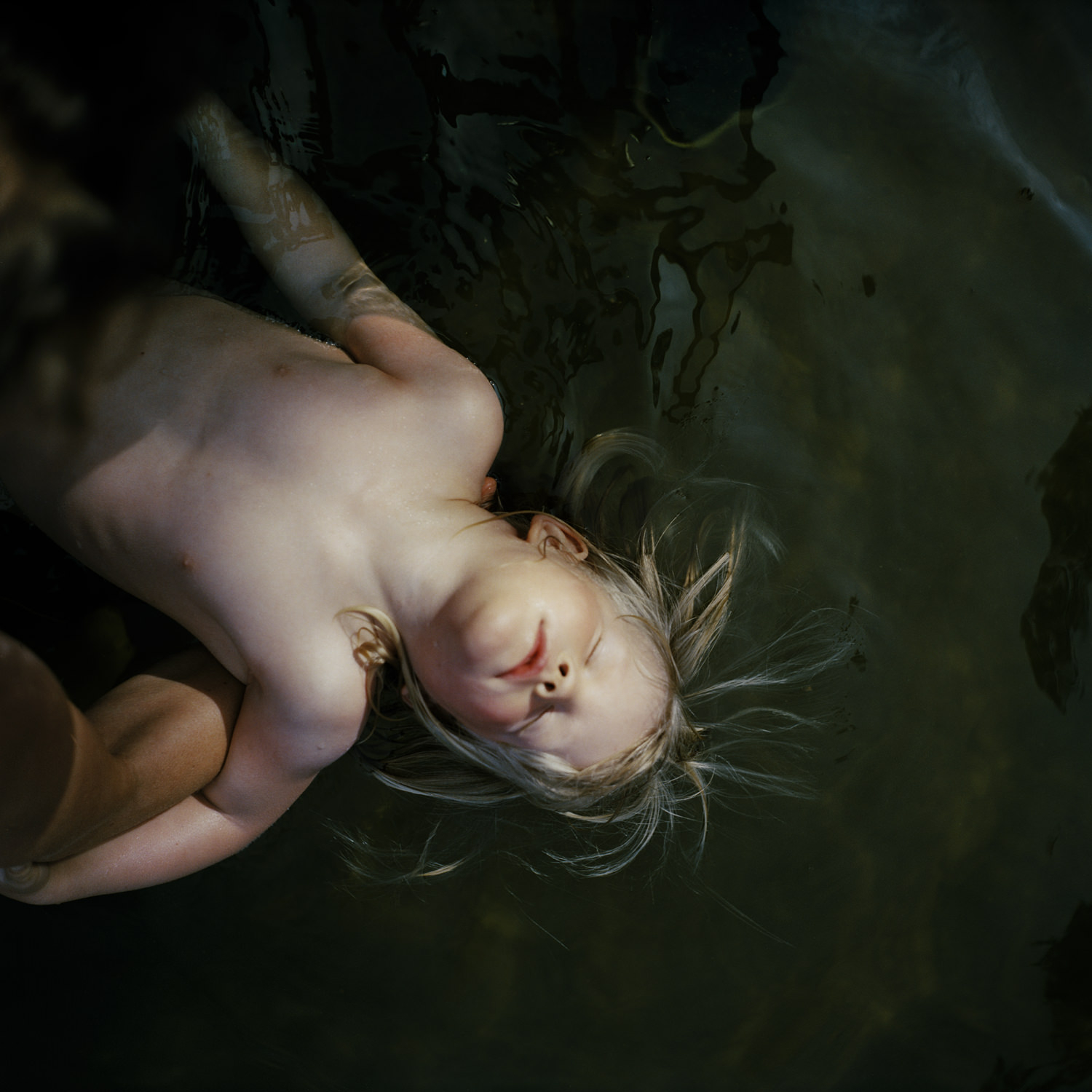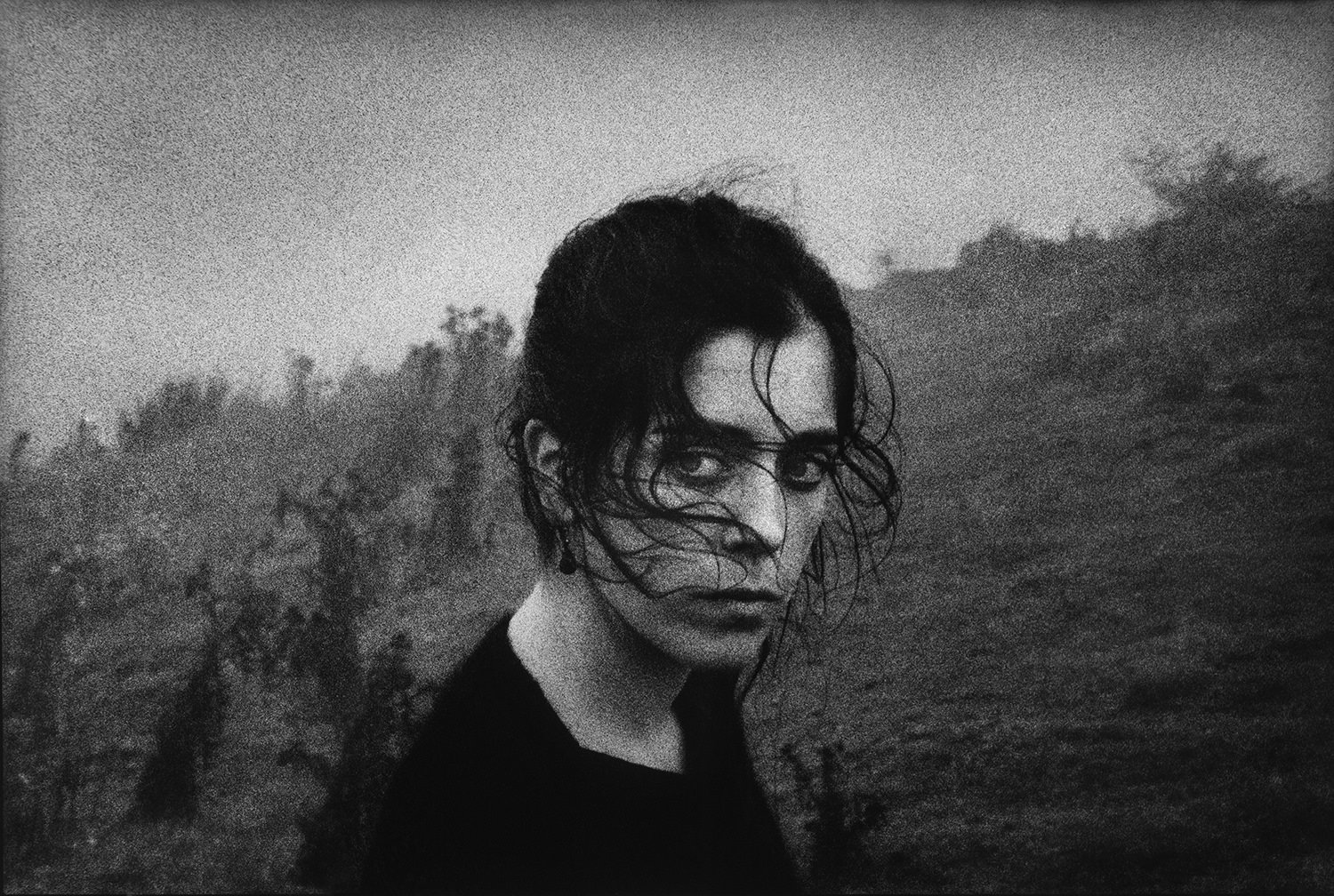
Let’s talk about the genesis of this « North End » project. You were the 2015 winner of the « hors les murs » program with the French Institute?
I started the « North End » series thanks to the carte blanche I was given in 2009 by Diaphane, Pôle photographique in Picardie, as part of their « Destinations Europe » project. It was a 5-day trip to a low-cost flight destination from Beauvais. I chose a city I had never been to, Glasgow. This stay was a revelation and I made many images that are still part of this series. Then I just wanted to continue. In 2013, the Travelling Festival with Mirabelle Freville, offered me to make a slide show about Glasgow. The following year I decided to explore the northern cities of England, Manchester and Liverpool. It was only in 2015 that I applied for the « Hors les Murs » program at the French Institute because I wanted to stay longer and finish the series. This scholarship allowed me to travel 5 weeks through Manchester, Bristol, Cardiff, and London. It is a grant from the French Institute that supports artists each year on a specific project in all artistic disciplines.
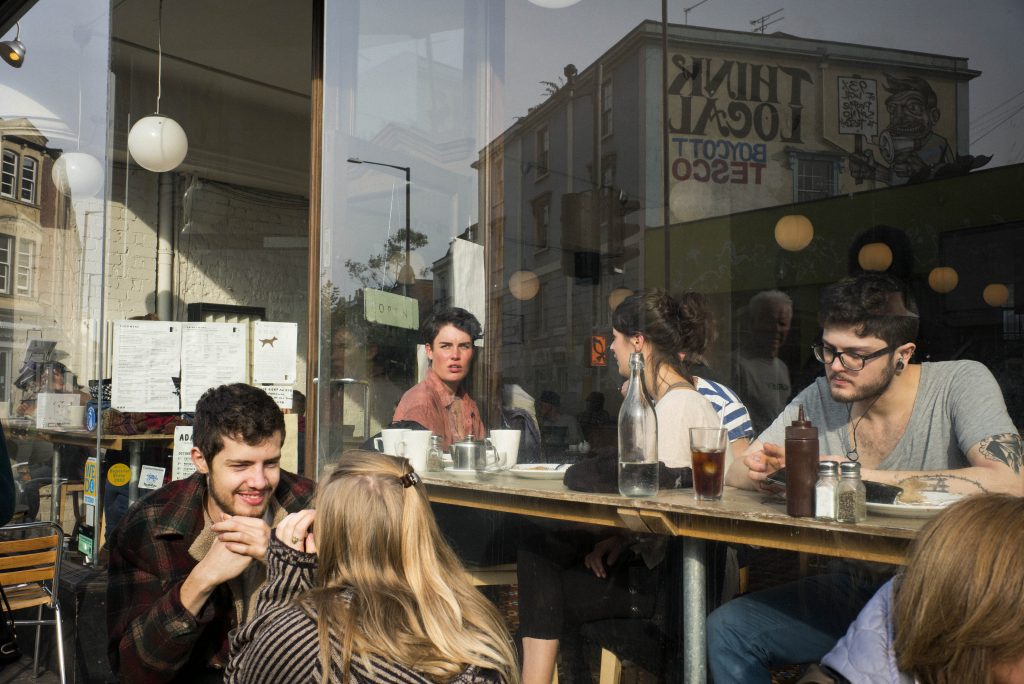
You already worked in the north of France. What attracts you to the countries of northern Europe?
I traveled for several years in Scandinavian countries. I loved the lights, the snow-covered cities, and the idea of Europe’s borders. I went to Russia too, to St. Petersburg. Always in winter or early spring because I also like the cold. In parallel, I was invited in 2010 to do a residency in Beauvais. The north of France is already another place for me, almost a foretaste of England… That is my relationship with the north of the hemisphere. I have never worked in Belgium before, even though I have often been told that the mood of this country corresponds to my universe.
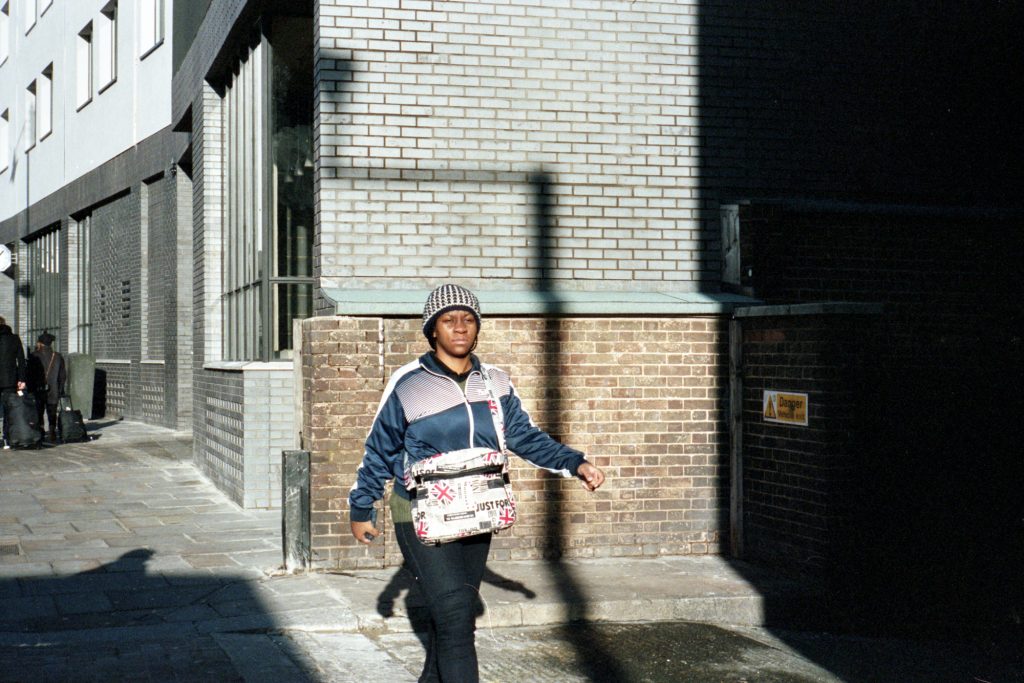
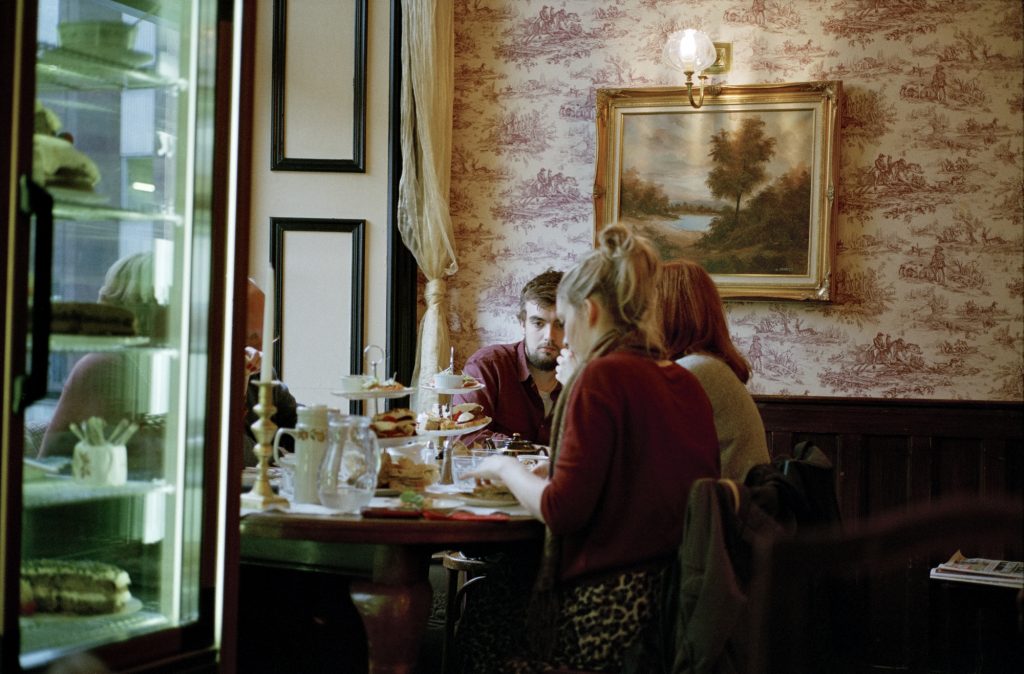
« I am fascinated by people, the stories you think you can guess from the faces you see on the street, but also that pause, creating by the photographic cut, simply extracting the moment from its context, isolating an emotion, a light. »
In your photos, we see a poetic wandering according to me of a suspended moment. Tell me more about the moment when you feel the urge to take a picture?
I do believe in a kind of « rise of circumstances » as Denis Roche said. When we trigger, we are in particular attention to make the most of what may come. I walk a lot, I observe, I’m not staying long in the same place… It is a profession of walker. I don’t necessarily take many photographs, but there are moments when everything is organized in the frame and makes sense. But I would say that several elements make me support it. It’s often when they’re all together that it works. First, the scene in front of me, then a light.
I am fascinated by people, the stories you think you can guess from the faces you see on the street, but also that pause, created by the photographic cut, simply extracting the moment from its context, isolating an emotion, a light. I’m not staging anything. This ambiguity between reality and fiction interests me; it is one of the main threads in my work. I like it when the scene seems fictional. Reality often goes beyond fiction, it is sometimes implausible. Therefore, it is more surprising than the staging which strives to remain credible, and plausible.
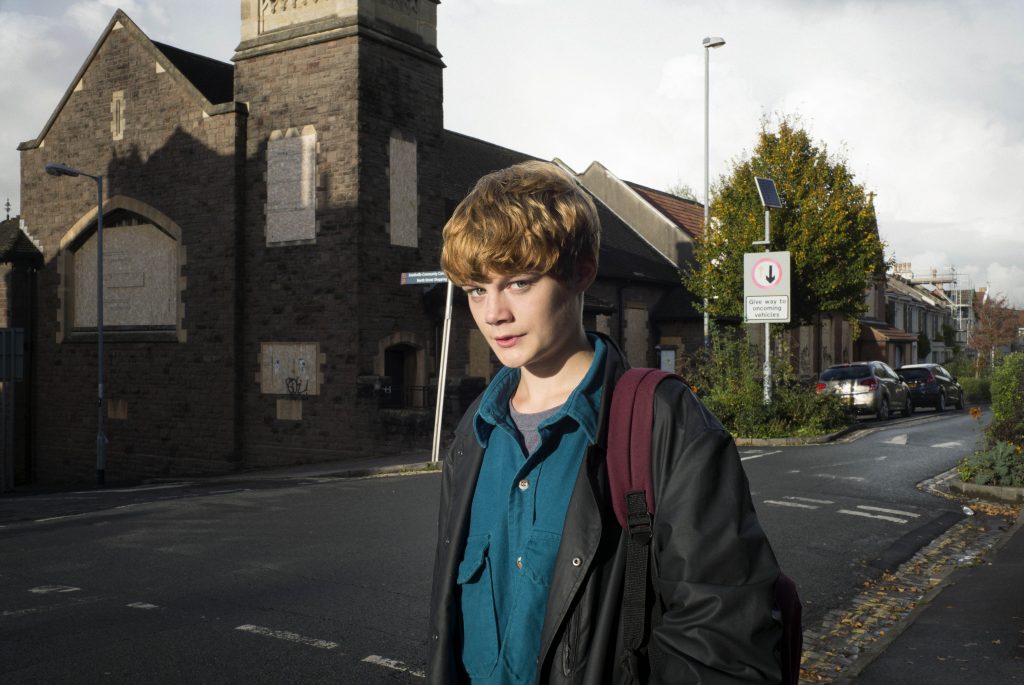
What is your process when you start work?
I never know what I will do. My way of working is very free, instinctive, and attentive to encounters, to light, I move forward with the comings and goings, using the contact sheet and the combination of images. The work in the United Kingdom became clearer as I traveled. I never left for very long, except for the last trip. I was fascinated by the post-industrial cities of northern England. I wanted to understand what happened to them after the Thatcher era. The social struggles had been the backdrop of my childhood. Then I let myself be carried away.
How long did it take?
I left in 2009 for the first time and the last time in 2015. I left 5 times if my memories are good, 8 to 10 days approximately for the first 4 stays and 5 weeks in 2015. I often travel to a youth hostel, I often feel very comfortable there and it is not expensive.
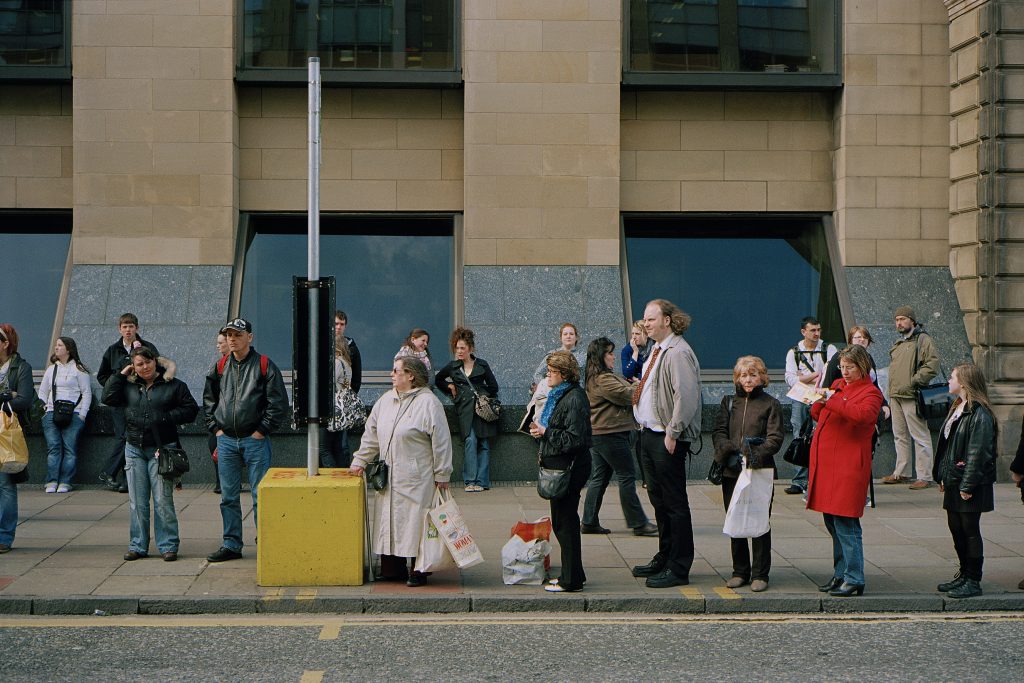
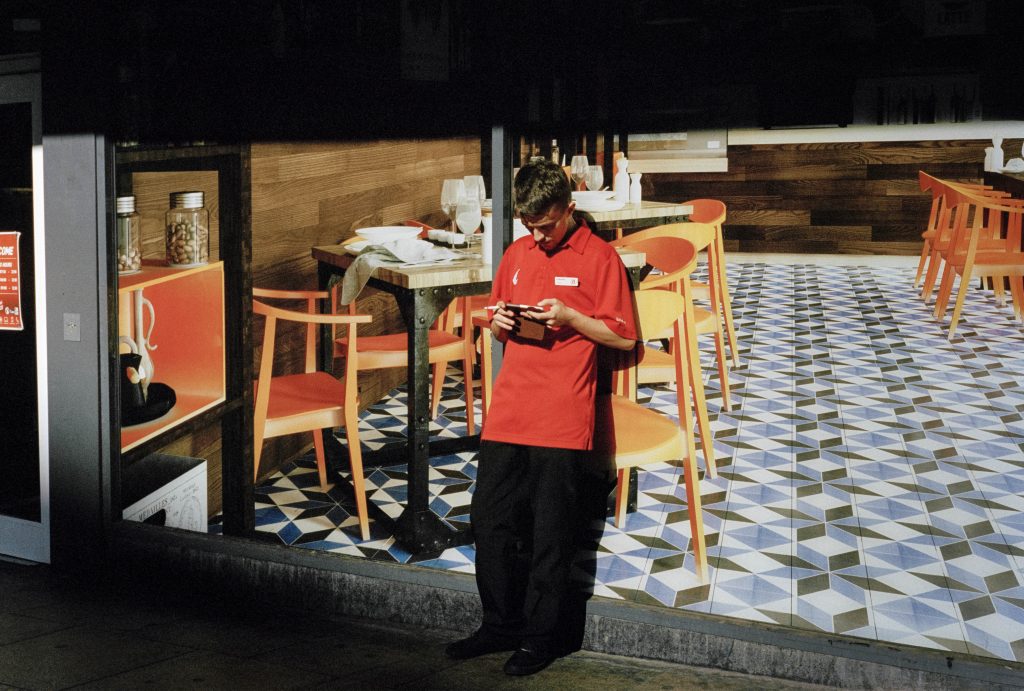
« Sometimes I prefer the fragility of the film. Everything is so clean with digital, sometimes too much. »
What camera did you use? Digital or analog?
I work with an M7 Leica, I used an M6 but it was stolen from me! Leica lent me for the last stay in England a digital one, the M240, they had my camera in repair and could not return it to me in time. So I tried digital for the first time…and bought a Leica MP the following year. I now work with both. I immediately appreciated the color and the rendering as they studied it, there is a real continuity. I think there are two ways of working. When you photograph in film, you don’t know what you’ve done, you stay focused on what’s going on around you after shooting while in digital, you can’t stop looking at the screen right away. Digital helps to tell you a story already and to assure you immediately of the quality of the shot, but it may already be directing your gaze too much. However, I appreciate being able to work with low lights, at nightfall or indoors. Sometimes I prefer the fragility of the film. Everything is so clean with digital, sometimes too much. Once again, Leica has worked on a certain roundness of contours, it is not as brittle as some digital images.
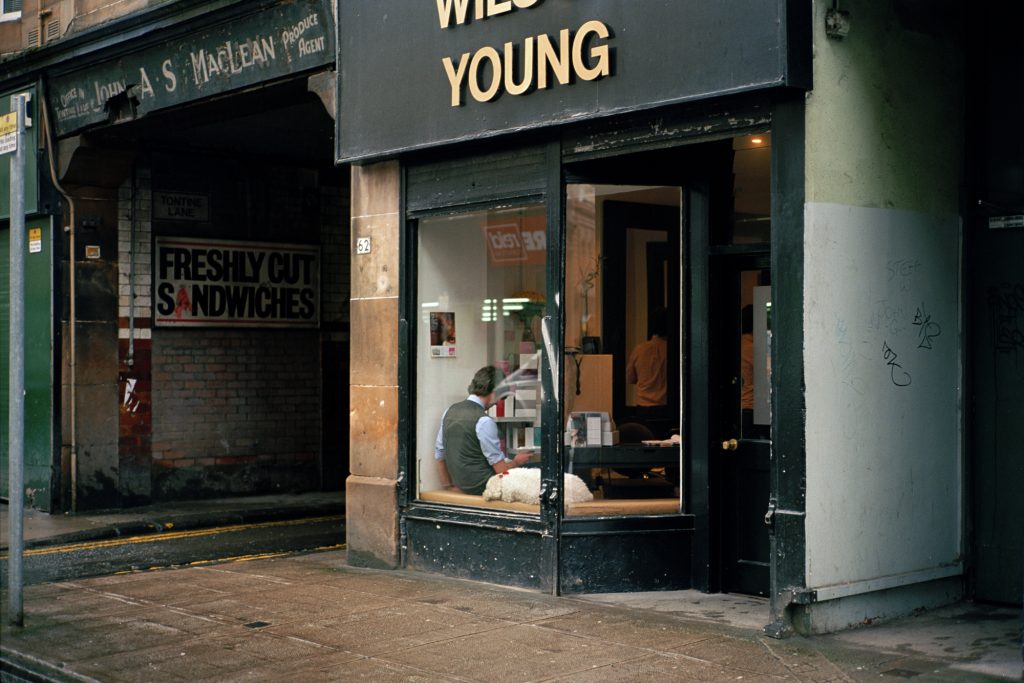
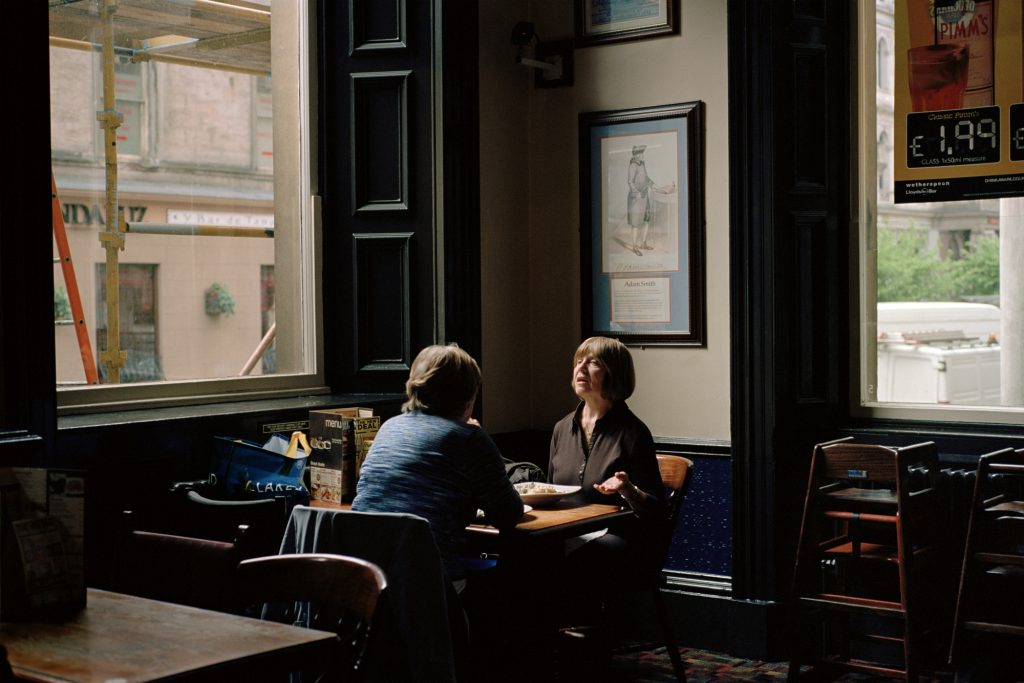
I feel like you’re influenced by painting. Does that make sense to you?
I understand when people talk to me about painting in my work because I am very attentive to the color, and light. My job as a manufacturer in a publishing house has certainly enriched my knowledge of colorimetry, my role being to control the photogravure of images and then print it with the artists. But I’m more influenced by literature. The choice and juxtaposition of photographs look like an editing work in which narration is an important issue. I like a lot American literature and short stories. Raymond Carver, Rick Bass, Jim Harrison but also Vladimir Nabokov. For my book to be published in July at the time of the exhibition In Arles 2018, I asked writer Robert McLiam Wilson if he wanted to write about this series. His text, entitled « I hate photographers » reflects what I love in his writing, this sharpness mixed with humour and darkness. The book is published by Editions Actes Sud.
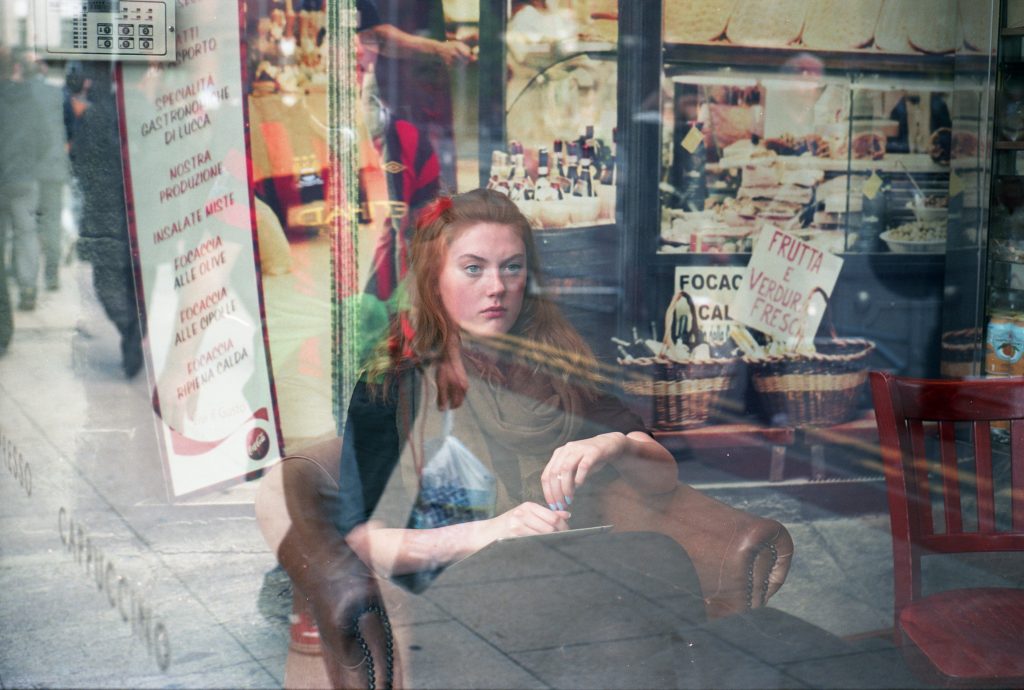
Is there a moment / a photo that marked you?
As I said at the beginning, the first short stay was very memorable. I had a very small budget and I decided at the last moment to leave with my son who was then 6 years old. We were in May and I thought it was relatively hot. It was just the opposite and I had to alternate the long hours of walking with coffee breaks so he could rest a bit. I would say that it’s kind of thanks to him that I took this picture of the two women sitting in a pub. A few years later, I left with my family to spend the New Year in London and I made this photo of the child leaning against the white fence with this man walking towards me, one bag in each hand… he’s still my son!
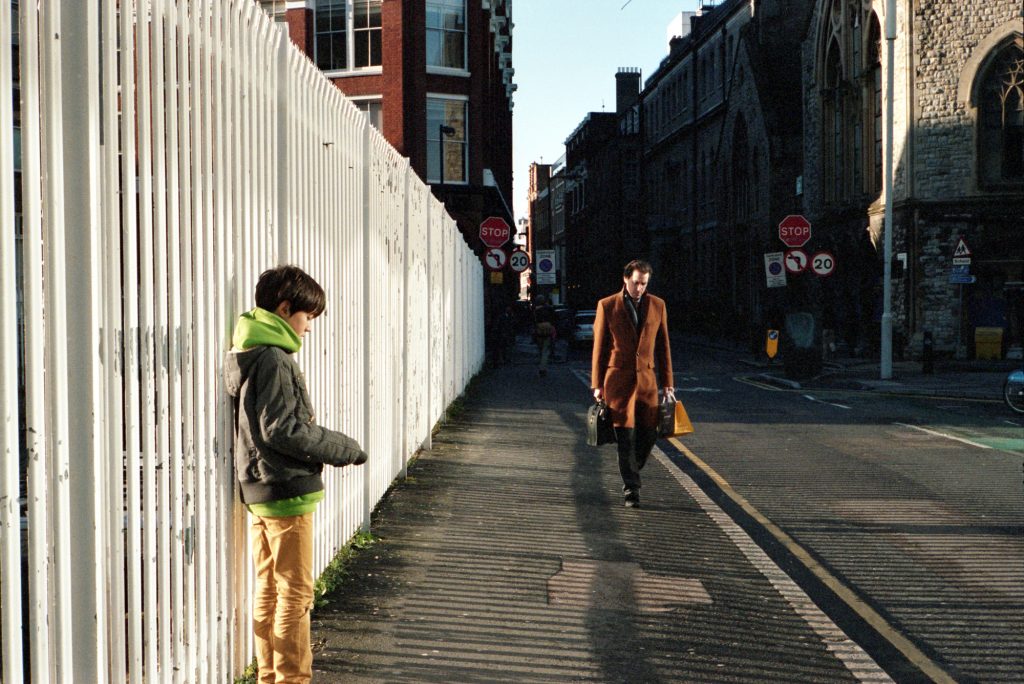
What are your photographic influences?
There are so many photographers that I admire…I can say that William Eggleston was one of my great inspirations, whether for his freedom of subjects, his color, his lights, or his poetic universe. Then there are all the colorists and photographers from street photography Stephen Shore, Meyerovitz, and female figures like Diane Arbus. On the European side, I like the work of Luigi Ghirri and Vivianne Sassen.

Your 5 best photobooks?
Eggleston’s guide – William Eggleston
Kodachrome – Luigi Ghirri
A Storybook Life – Philip Lorca diCorcia
Flamboya – Vivianne Sassen
Valparaiso – Sergio Larrain
Interview Kalel Koven / In Frame
All photos are © Géraldine Lay, courtesy Galerie le Réverbère.
book « North End » by Géraldine Lay is published by Actes Sud
North End will be exhibited at la croisière in Arles Festival / From July 2 to September 23, 2018
Links: geraldinelay.com / Galerie Le Réverbère

